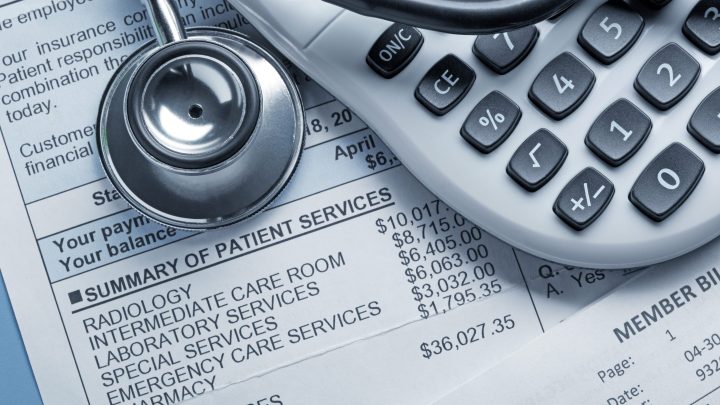
Health and Wealth: Why Americans are drowning in medical debt
Health and Wealth: Why Americans are drowning in medical debt

Almost a third of all working adults in the United States are carrying some kind of medical debt — that’s about 15% of all U.S. households. This debt is also the leading cause of bankruptcies in the country.
To better understand what’s behind the high cost of health care and how consumers can better navigate the system, Marketplace recently hosted a live event with a panel of experts, moderated by David Brancaccio. He began the conversation by speaking consumer rights advocate Allison Sesso and health economist Dr. Jennifer Schultz.
Watch their full conversation in the video below or listen to a portion of their conversation by clicking the media player above. The following is an edited transcript of their conversation.
Allison Sesso: The problems are that there’s not a lot of regulation around the fact that nonprofit hospitals are required to have a charitable approach — a lot of the details are left up to the hospitals to figure that out. And to be honest, they’re dealing with revenue cycle and billing. And it’s a lot of regulation. And if you talk to the people who are actually in the billing cycles at the hospitals, they are overwhelmed. We want them to invest in the care, not overbilling, but yet we want them to have strong solid billing approaches that get people the charity care that they need. There are solutions to this. There’s things like presumptive eligibility, that’s what we do. There’s absolutely no application process. And so hospitals can do the same thing.
David Brancaccio: Well, there you go.
Allison Sesso: And that’s what I think should happen.
David Brancaccio: Jennifer Schultz, 90% of people in these United States have health care coverage. So what’s with the debt?
Jennifer Schultz: Well, even though people have health insurance coverage, they may have very high deductibles. They’re what we call underinsured. And there’s what’s called surprise billing, there’s price gouging. And the fundamental problem is our high prices. This is why we pay more than twice the amount per person for medical care compared to other wealthy countries.
David Brancaccio: I did see a figure — $819 billion — and that figure was total profits expected by all for-profit healthcare companies in America by the year 2027. And that will be up 40% from 2022. So some of the cost is due to that system?
Jennifer Schultz: Yeah, we shouldn’t even call this system because that’s not what we have in the U.S. We use that word, even at nonprofit hospitals. We pay our CEOs a lot — millions of dollars. That’s not all of the blame. If we paid them less, we would drastically reduce our $4.3 trillion spending per year on health care, but we just have to pay providers in a different way. And I’ve been arguing for many years that we have to pay them to show us good health outcomes, since we’re not doing well on population health in our country, so we’re not wasting resources and not putting money towards things we may not necessarily need.
David Brancaccio: We have over 200 people watching on Zoom right now. Thank you for joining us at home. And some have sent in some questions and we’re going to bounce them off the panel here. Carol is looking for some pointers. Carol’s lucky enough to have good medical insurance on paper, but they need tips for getting insurance companies to actually pay claims for out-of-network coverage. You’ve looked at the billings. Is there any trick you’ve come up with in your own life?
Allison Sesso: I would say stay in-network and know what your network is and check in advance as much as you can. Unfortunately, that doesn’t work. In reality, if you end up in an ambulance and unconscious, but do the best you can.
David Brancaccio: Jennifer, this new federal law is supposed to stop the surprises?
Jennifer Schultz: In 2020, Congress passed and the president signed the No Surprises Act. So you are not responsible for out-of-network costs if you did not have the choice of provider or an ambulance service. But right now, this is being litigated. But the other big problem is that hospitals are buying a lot of provider groups and that is so they can charge hospital prices for outpatient care. And there’s a bill that passed the U.S. House with bipartisan support called Lower Costs, More Transparency. This bill needs to pass the Senate. It does not allow hospitals to charge outrageous prices for outpatient care, and that should be applied to all the services that can be provided at an outpatient clinic.
There’s a lot happening in the world. Through it all, Marketplace is here for you.
You rely on Marketplace to break down the world’s events and tell you how it affects you in a fact-based, approachable way. We rely on your financial support to keep making that possible.
Your donation today powers the independent journalism that you rely on. For just $5/month, you can help sustain Marketplace so we can keep reporting on the things that matter to you.


















